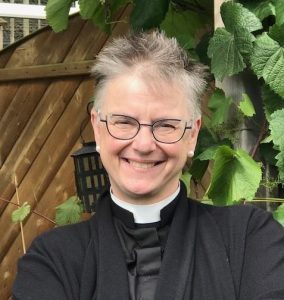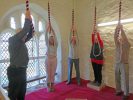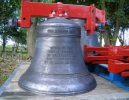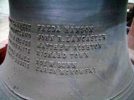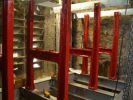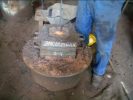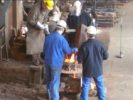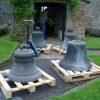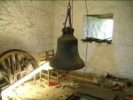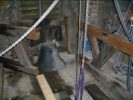Uncategorised
Ghyll Dog Show
Family Fun Dog Show 1pm Saturday 14th of June
in front of St Mary’s
Coach House Cafe Open
Services May and June 2025
Upcoming services
Sunday 25th May
1030 St Michaels Bracewell
bring a picnic 🙂
No service at Holy Trinity Barnoldswick or Ghyll that day.
Ascension Day Thursday 28th May
service at 1030 am at Holy Trinity Barnoldswick
Sunday 1st June
All Together service of Holy Communion at Holy Trinity Barnoldswick 1030
Services from Easter until the end of June
Services and Activities for Holy Week and Easter 2024
Services until Easter 2024
Our services from 1st February until the week before Easter are set out below. Information about Holy Week and Easter 2024 coming soon!
Rota to Easter-for website
A short tour of St Mary-le-Ghyll Church
A Short History of St Mary le Ghyll Church
Christmas 2022
Highlights of 2022
2022 was a great year around the benefice… Among many other events we took part in the town Festival of Ice and Fire, the Food Festival, Barlick in Wonderland, Barlick Beach and the Morris Dancing Festival. Rev’d Claire was ordained priest and Louise was licensed as a Reader. We celebrated Christmas and Easter, Rogation and Harvest and Remembrance.
Highlights of 2022Barlick in Wonderland
Barlick in Wonderland took place around the town on 25th March 2022. At Ghyll church teas and cakes were served, there was a chance to try bell-ringing, and history leaflets and a history quiz were available.
Barlick in WonderlandMessy Church
In 2022 we have been running Messy Church sessions in church and in our Church School. In these we have been thinking about some of the things that Jesus said he was… the light of the world, the good shepherd, the true vine, the bread of life… We celebrated all the work that the children have done in these sessions at our all-age service on 3rd July. We hope to run more Messy Church sessions from September. Watch this space for more details.
MessyPlatinum Jubilee Celebrations
We had a wonderful Right Royal Day Out at St Mary’s celebrating the Queen’s Platinum Jubilee
JubileeRev’d Claire’s ordination and first Eucharist
Here are some photos of Rev’d Claire’s ordination as priest and her first Eucharist at Holy Trinity. Thank you to everyone who came to support her on these special occasions.
OrdinationServices: January to March 2022
See below for details of all our main services until the end of March. More details of special services for Lent and Easter to follow soon…
If you want to find out more about what our services are like, click here.
Services to end of March - for websiteBlue Christmas

Christmas is not a time of joy and tinsel for everyone. Many people struggle with loss, loneliness or other difficulties at this time of year. We will mark this on Friday with a short, reflective, supportive service. All are welcome. Please tell anyone you know who might find this helpful. Friday 17th December 6pm at Holy Trinity Church, Barnoldswick.
Christmas around the Benefice
All our Christmas services and activities are listed here.
Overview of all services and activities
Christmas Flier
Christingle
Christingle
Messy Christmas
Messy
Carol Services
Christmas weekend
Christmas ServicesDecember Services
Funerals
Help planning a funeral…
When someone you love has died, it can be hard to know where to turn. We can help with funeral services in church, at the crematorium or by the graveside. Talk to your Funeral Director for more information, or contact the Vicar. Her contact details can be found here.
For more information about Church of England funerals, click here.
Weddings
We would love to help you celebrate your wedding…
If you are considering a church wedding, would like to make a booking, or are just interested in finding out more, please contact the Vicar. Her contact details can be found here.
To find out more about weddings in the Church of England, click here.
Baptisms
We would be delighted to welcome your baby into the Church family…
If you are interested in booking a Baptism (sometimes also called a Christening), please contact the Vicar. Her contact details can be found here.
To find out more about Baptisms in the Church of England, click here.
If you’re not sure if a Christening is for you, it’s also possible to arrange a service of Thanksgiving for the Birth of a Child. This involves less commitment than a Baptism and is a shorter service… and you can always opt for a full Christening later. Find out more by clicking here.
Did you know…? While many people choose to have a Christening as a way of welcoming a new baby, it is possible to be baptised at any age. Contact us if you’d like to find out more.
What to expect at our regular services
Are you curious about what to expect if you come to one of our services? We’ll try to explain what happens below, but we’d love you to come along and find out for yourself…
Holy Communion:
Most of our Sunday morning services (as well as our regular Thursday morning services at Holy Trinity) are services of Holy Communion. At this service we remember Jesus’ last meal with his friends as we celebrate the fact that we are part of a Christian ‘family’ or ‘community’.
After a welcome, we begin by remembering the ways in which we all often fail to live the kind of lives we’d hope to live and by saying sorry for these. (We do this communally. Don’t worry, you will never be asked to speak individually or about yourself…) We are reminded that God loves us unconditionally and that we are forgiven for anything we may have done wrong.
We then listen to readings from the Bible and a sermon which usually explains how one or more of the readings relates to our lives here and now. There are some prayers, and then we turn to those around us and offer them a sign of peace (in non-Covid times, we might shake hands or say ‘Peace be with you’). By doing this, we show emphasise that sense of being part of one community, with no animosity between us, before we approach Jesus’s table.
In the next part of the service, we remember Jesus’s last meal with his friends. The priest takes and blesses bread and wine and offers them to those who are gathered. (Currently, we are only receiving the bread because of Covid restrictions.) Anyone who is baptised in any Christian denomination is welcome to receive communion with us. Alternatively, keep your hands by your sides when you come up for communion and the priest will give you a blessing instead. If you do not feel ready to come up for communion you can simply stay in your seat. No-one will ask you to do anything you are not comfortable with.
After a prayer of thanks for what we have received, there is a final blessing, and then we share a cup of tea or coffee together.
In non-Covid times, our Sunday services are punctuated with hymns which we sing together. The Thursday morning service is a spoken service only. Currently, we are not singing at Holy Trinity, but there is music played through the sound system. At St Mary’s and St Michael’s we have returned to singing some hymns.
The All-Age Holy Communion service, which takes place at Holy Trinity on the first Sunday of every month, is similar to the above, but is designed to be accessible to people of all ages and may be more interactive.
Some of our services do not involve communion. These services involve hymns, Bible readings, a sermon, and prayers. At St Mary-le-Ghyll the service of Morning Prayer uses traditional language, while the Service of the Word at St Michael’s Bracewell uses contemporary language.
Services in November
Details of services in November are as follows:
November services for web
All are very welcome at any of our services.
Baby Loss Awareness Week 2021
We commemorated Baby Loss Awareness Week 2021 on 15th October, creating our own Wave of Light at Holy Trinity.
Babyloss week for websiteThe Bible Course
Would you like to find out more about the Bible? What does it all mean? How should we approach it? How do all the books hang together? Is it still relevant today?
We are running an 8-week course starting in the first week of February which sets out to answer just those questions and more.
To find out more, click here or email arnolds68@btopenworld.com.
Looking ahead to November
Services in October
Macmillan Fundraiser 2021
Our fundraiser for Macmillan nurses raised over £1300. Huge thanks to all involved, including the local businesses and individuals who donated prizes, food and money. We are so proud to be part of this generous community!
We hope you enjoy the pictures from the event below.

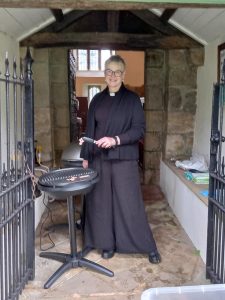



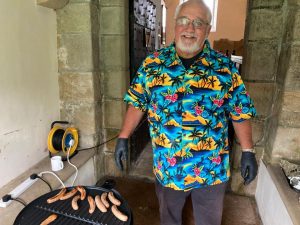

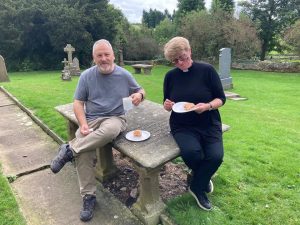

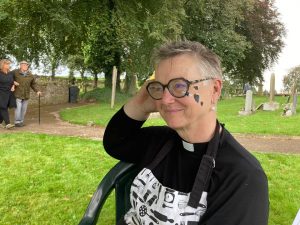
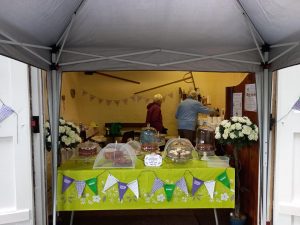
Services at our churches in September
This week’s Pew Sheet
Read this week’s pew sheet for prayers and readings for the week, as well as information about what’s happening around the Benefice.
PewSheet 10th after TrinityMagazine: Summer 2021
Benefice Magazine: Summer 2021
We hope you enjoy reading the latest issue of the Benefice Magazine. Its editor, Pat Sagar, is always looking for new ideas for articles and contributions for future issues. Contact her on patsagar@tiscali.co.uk.
Summer 2021 magazine - screen version
Coach House Open
T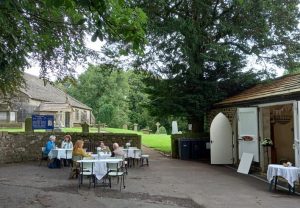 he beautiful Coach House at Ghyll Church is open for teas, coffees and cake on Tuesdays, Saturdays and Sundays, 10.30-3.30. All very welcome. Come and visit this beautiful twelfth-century church situated on the Pendle Way, and stop for a cup of tea or coffee and a slice of cake.
he beautiful Coach House at Ghyll Church is open for teas, coffees and cake on Tuesdays, Saturdays and Sundays, 10.30-3.30. All very welcome. Come and visit this beautiful twelfth-century church situated on the Pendle Way, and stop for a cup of tea or coffee and a slice of cake.
Open in August
Holy Trinity Church will be open every day, Monday-Friday, between 10.00 and 12.00. You are always welcome to drop in for a chat or to light a candle.
On Wednesdays in August, we will be running a pop-up café and shop, with refreshments, good quality summer clothing, bric-a-brac, and a food bank (bring what you can; take what you need). Open 10.00-1.00.
On Thursdays at 10.00 you are very welcome to join us for a service of Holy Communion.
Vicar
Rev’d Dr Sheena McMain
Tel: 01282 812028
Email: sheena.mcmain@leeds.anglican.org
Data Privacy Notice
THE UNITED BENEFICE OF BARNOLDSWICK WITH BRACEWELL
- Your personal data – what is it?
Personal data relates to a living individual who can be identified from that data (for example a name, photographs, videos, email address or address). Identification can be by the information alone or in conjunction with any other information in the data controller’s possession or likely to come into such possession. The processing of personal data is governed by the General Data Protection Regulation (the “GDPR”).
- Who are we?
The PCC’S of Barnoldswick and Bracewell (Churches of Holy Trinity, Barnoldswick, St Mary-le-Ghyll, Barnoldswick and St Michael’s, Bracewell) are the data controllers (contact details below). This means it decides how your personal data is processed and for what purposes.
- How do we process your personal data?
The PCC’S of Barnoldswick and Bracewell complies with its obligations under the “GDPR” by keeping personal data up to date; by storing and destroying it securely; by not collecting or retaining excessive amounts of data; by protecting personal data from loss, misuse, unauthorised access and disclosure and by ensuring that appropriate technical measures are in place to protect personal data.
We use your personal data for the following purposes: –
- To enable us to provide a voluntary service for the benefit of the public in a particular geographical area as specified in our constitution;
- To administer membership records;
- To fundraise and promote the interests of the charity;
- To manage our volunteers;
- To maintain our own accounts and records (including the processing of gift aid applications);
- To inform you of news, events, activities and services running at Holy Trinity, Barnoldswick, St Mary-le-Ghyll, Barnoldswick and St Michael’s Church at Bracewell.
- What is the legal basis for processing your personal data?
- Explicit consent of the data subject so that we can keep you informed about news, events, activities and services and keep you informed about diocesan events.
- Processing is necessary for carrying out legal obligations in relation to Gift Aid or under employment, social security or social protection law, or a collective agreement;
- Processing is carried out by a not-for-profit body with a political, philosophical, religious or trade union aim provided: –
- the processing relates only to members or former members (or those who have regular contact with it in connection with those purposes); and
- there is no disclosure to a third party without consent.
- Sharing your personal data
Your personal data will be treated as strictly confidential and will only be shared with other members of the church in order to carry out a service to other church members or for purposes connected with the church. We will only share your data with third parties outside of the parish with your consent. - How long do we keep your personal data?
We keep data in accordance with the guidance set out in the guide “Keep or Bin: Care of Your Parish Records” which is available from the Church of England website [see footnote for link].
Specifically, we retain electoral roll data while it is still current; gift aid declarations and associated paperwork for up to 6 years after the calendar year to which they relate; and parish registers (baptisms, marriages, funerals) permanently.
- Your rights and your personal data
Unless subject to an exemption under the GDPR, you have the following rights with respect to your personal data: –
- The right to request a copy of your personal data which the respective PCC’s of Holy Trinity, Barnoldswick, St Mary-le-Ghyll, Barnoldswick and St Michael’s Church at Bracewell, holds about you;
- The right to request that the respective PCC’s of Holy Trinity, Barnoldswick, St Mary-le-Ghyll, Barnoldswick and St Michael’s Church at Bracewell, corrects any personal data if it is found to be inaccurate or out of date;
- The right to request your personal data is erased where it is no longer necessary for the respective PCC’s of Holy Trinity, Barnoldswick, St Mary-le-Ghyll, Barnoldswick and St Michael’s Church at Bracewell to retain such data;
- The right to withdraw your consent to the processing at any time
- The right to request that the data controller provide the data subject with his/her personal data and where possible, to transmit that data directly to another data controller, (known as the right to data portability), (where applicable) [Only applies where the processing is based on consent or is necessary for the performance of a contract with the data subject and in either case the data controller processes the data by automated means].
- The right, where there is a dispute in relation to the accuracy or processing of your personal data, to request a restriction is placed on further processing;
- The right to object to the processing of personal data, (where applicable) [Only applies where processing is based on legitimate interests (or the performance of a task in the public interest/exercise of official authority); direct marketing and processing for the purposes of scientific/historical research and statistics]
- The right to lodge a complaint with the Information Commissioners Office.
- Further processing
If we wish to use your personal data for a new purpose, not covered by this Data Protection Notice, then we will provide you with a new notice explaining this new use prior to commencing the processing and setting out the relevant purposes and processing conditions. Where and whenever necessary, we will seek your prior consent to the new processing.
- Contact Details
To exercise all relevant rights, queries of complaints please in the first instance contact:
The PCC Data Protection Co-ordinator, 131 Gisburn Road, Barnoldswick BB18 5JU
You can contact the Information Commissioners Office on 0303 123 1113 or via email https://ico.org.uk/global/contact-us/email/or at the Information Commissioner’s Office, Wycliffe House, Water Lane, Wilmslow, Cheshire. SK9 5AF.
[1]Details about retention periods can currently be found in the Record Management Guides located on the Church of England website at: – https://www.churchofengland.org/more/libraries-and-archives/records-management-guides
History uncovered


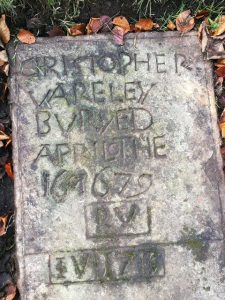
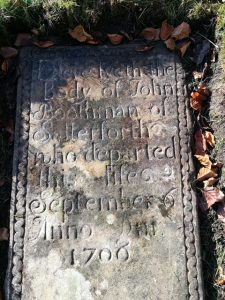
In November 2017, four rather overgrown graves received a bit of TLC in Ghyll Churchyard. Once the grass was cleared away, the stones dating back to the 17th and 18th centuries showed the resting place of:
Cristopher Vareley (1679)
Elizabeth Varele (1682)
John Boothman (1706)
‘S.H’ (1705)
The gravestones can be found near the small door at the south side of the church.
Photo Gallery – Ghyll Bells
Churchyard Care
Rules and regulations about our Churchyards and Graves
Churchyards
6.1 Every parishioner (together with those whose names are entered on the electoral roll, and those dying in the parish) have a right of burial in the graveyard of the parish provided room permits. Other persons may be buried only with the consent of the incumbent which should be given or withheld in accordance with general guidance given by the PCC. The position within the churchyard for a burial to take place is a matter for the incumbent. The burial plot is not owned by the next of kin of the deceased, but remains in the ownership of the parish priest. .
6.2 Incumbents and PCCs having the care of churchyards should, if they have not already done so, draw up regulations governing the upkeep of graves so that those who wish to tend a grave in the churchyard may know what is and is not allowed. The following provisions should be included in order to underline the importance of the Churchyard Regulations (see Appendix II):
- bulbs and small spring flowering plants may be placed in the soil of any grave;
- plants or cut flowers may be placed in a removable sunken container (of an unbreakable material, preferably unpolished aluminium) in the soil of any grave;
- wreaths and cut flowers placed on graves and plants and flowers in containers may be removed, when withered, by those authorised to do so by the incumbent;
- no artificial flowers or foliage may be placed on or about graves (except for Remembrance Day poppies) and, if so placed, will be removed.
- Other objects, including railings, chippings, pebbles and similar materials, statues, keepsakes, solar lamps or similar,toys and other mementoes are not permitted on a grave.
Careful thought will need to be given to requests for the planting of trees and shrubs in preference to the erection of headstones. Memorials for persons not buried in the churchyard may not be sanctioned by the incumbent. They require a faculty and exceptional circumstances will need to be demonstrated. Various templates are available from the Archdeacon which can serve as models for parochial leaflets of this type, but care should be taken to adapt them for the particular circumstances of individual churchyards.
Graves
6.10 There is no right to erect a headstone or other memorial on a grave. The incumbent has discretion to authorise the erection of any headstone which falls within the types and classes permitted at Appendix II. Although the incumbent may refuse to permit the erection of a headstone which conforms with the Appendix, he or she has no discretion to allow the erection of one which does not. It is open to individual applicants to apply for a faculty for the erection of headstones outside these categories. A standard form of Application is reproduced at Appendix III. Ownership of a headstone does not vest in the incumbent or the PCC but in the person who erected it and, after that person’s death, in the heir-at-law of the person in whose memory it was erected.
6.11 Incumbents need to be meticulous in ensuring compliance with these provisions, particularly as this will need to be done at a time when relatives may be distressed and vulnerable. Well intentioned laxity will result in pastoral difficulties in later years and for their successors. Equally, monumental masons who hold themselves out as competent to work in consecrated churchyards in this diocese will be expected to be familiar with the relevant regulations. Headstones erected without the authority of the incumbent or which are not within the types or classes permitted by the regulations are liable to be removed by order of the consistory court. The costs incurred will fall upon the person responsible for the unlawful erection of the headstone, the incumbent and/or the monumental mason concerned.
6.12 The purpose of the regulations is not to impose homogeneity, since variety is to be encouraged, but to ensure that headstones are erected which are appropriate for the environment in which they are set and in keeping with the church building. Thought must be given to aesthetics and to the sensibilities of those who will have cause to visit other graves in the same churchyard. Where possible, local materials should be used. The consistory court actively welcomes applications from parishes to permit the creation or variation of regulations for specific churchyards which take into account local practice, tradition and custom and the particular environmental needs of the church and graveyard. Such regulations, created by the parish itself and authorised by faculty, are likely to be easier to implement and police.
Inscriptions
6.14 Headstones, memorials, stained glass windows and other church furnishings may all bear inscriptions. It is essential that inscriptions are factually accurate and are written in such a way as to be comprehensible by future generations. The wording of inscriptions should interest and inspire the reader. They should be reverent and seemly and avoid the bland. Readers will want to know something of the person or event commemorated, and descriptions should be fulsome and well expressed. The use of pet names should generally be avoided as they can become meaningless and appear trite with the passing of time. Dates should be expressed in the form 7 August 1965 (or 7 8 65) and both the date of birth and of death should generally be included. Skilled craftsmen and letter cutters should be used.
Memorial plaques
6.16 Faculties for the erection of memorial plaques inside a church are ‘sparingly conceded’ and a case of ‘exceptionality’ needs to be made out, whether in terms of civic or Christian service. Parishes should be encouraged to turn their minds, instead, towards the creation or repair of church furniture or ornaments in lasting memory of particular individuals. Such items may be suitably inscribed.
Headstones
A headstone is a public statement about the person who is being commemorated. Making the right choice of stone, design and inscription is important not only to the relatives or friends who are going to provide the memorial, but also to the wider community because of the effect which the headstone may have upon the appearance of the churchyard. Attractive, well conceived designs by skilled and imaginative craftsmen should be encouraged. In the search for a wider range of designs than those usually seen, reference should be made to the Churchyards Handbook, the booklet Memorials by Artists and other resources which can be made available by the DAC. Sculpture or other statuary is not discouraged but must be authorised by faculty.
8. Also to be encouraged are fulsome inscriptions which give a flavour of the life of the person commemorated rather than blandly recording a name and dates. Epitaphs should honour the dead, comfort the living and inform posterity. They will be read long after the bereaved have themselves passed away. A memorial stone is not the right place for a statement about how members of the family feel about the deceased nor how they would address him or her were they still alive. Passages of scripture, which have a timeless quality, are to be preferred.
Types of headstones which may be permitted by parish clergy
10. The incumbent has authority to permit the introduction of a headstone which complies with the following requirements.
10.1 Size
No more than 1200mmnor less than750mm high (4 ft; 2ft 6in)
No more than 900 mm 500 mm nor less than wide (3 ft; 1ft 8in)
No more than 150 mm nor less than 75 mm thick (6 in; 3 in)
In the case of infant burials, no less than 600 mm x 375mm x 50mm(2ft x 1ft 3in x 2in)
10.2 Base
A base forming an integral part of the design of a headstone may be included, provided it does not project more than 50 mm (2 in) beyond the headstone in any direction and provided that it is fixed on a foundation slab of an approved material which itself is fixed flush with the ground and extending 75mm to 125mm(3 in to 5 in) all round so that a mower may freely pass over it.
10.2 Materials
The following stone is permitted:
Limestone: Derbyshire, Derbyshire Fossil, Ravensworth.
Sandstone: Yorkshire, Derbyshire – Derby Dale, Gloucester/Forest of Dean, Serena, Allswick Blue,
Slate: Cumberland, Westmoreland, North Lancashire.
Granite: Bluehill Grey, Cornish Grey, Cumbrian Grey, Devon Grey, Karin Grey, Indian Grey,
New North Grey, South African Dark Grey, Creetown.
10.3 Appearance
Polished stone or mirror finish is not permitted.
10.4 Inscriptions
Photographs or representations of objects or motifs such as a child’s toy are not permitted nor the use of ‘pet names’. Bronze or ceramic inserts are not to be used. Badges, crests or emblems may be used provided they are seemly and appropriate for the deceased. Any representation will need to be designed so that it may be accurately cut by a skilled craftsman. Masons’ or carpenters’ names, signs or marks may be inscribed on any monument provided their position and appearance are unobtrusive having regard to the monument as a whole. Incised lettering may be painted in gold, silver, matt white, matt black or matt grey. Plastic inserted lettering is not permitted.
